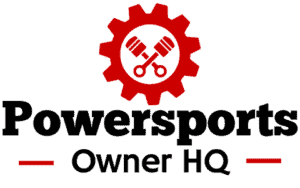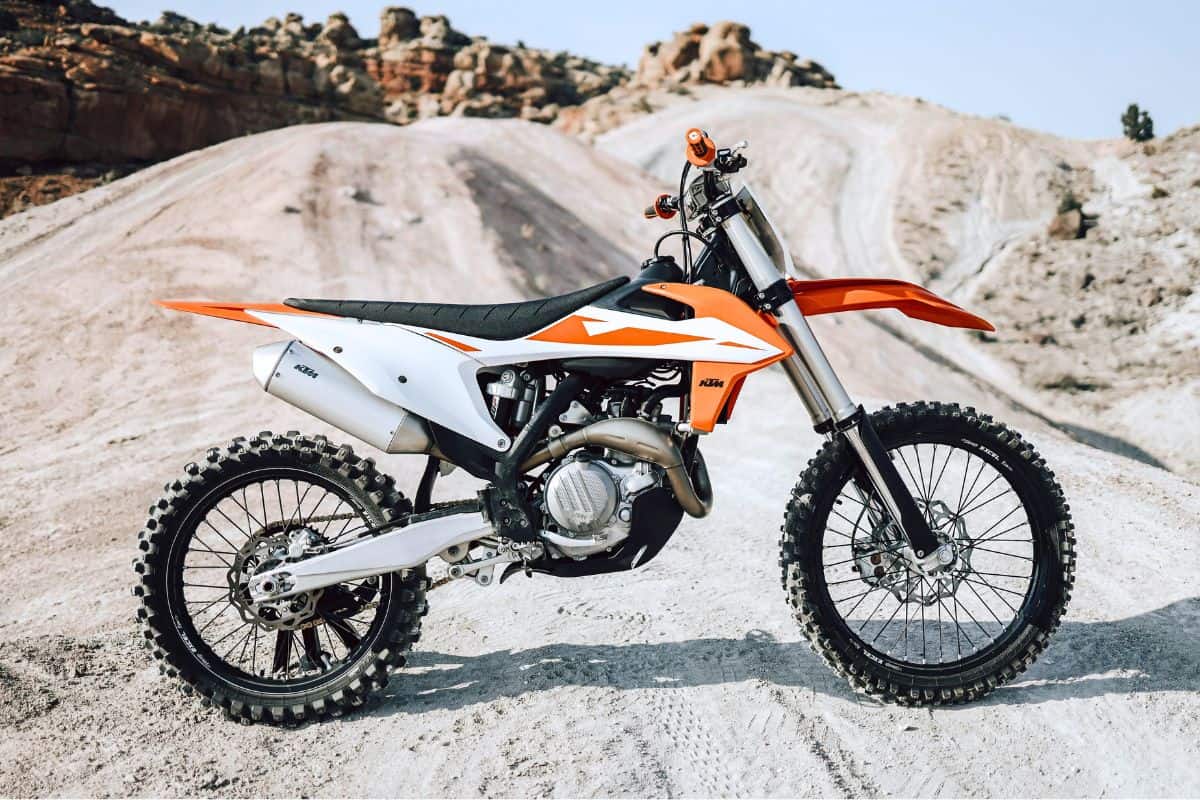Knowing and understanding dirt bike horsepower is important for all riders, as it measures the bike’s power output, which directly impacts acceleration, top speed, and overall capability.
However, with so many models on the market, it can be challenging to figure out what the average dirt bike horsepower is.
Especially when you consider that most dirt bike brands don’t even list their model’s horsepower ratings.
So to help clear up any confusion around dirt bike horsepower, we created this guide that provides the horsepower of 26 popular models and a complete breakdown of dirt bike horsepower.
Key Takeaways:
- Dirt bike horsepower can range from 3 HP for youth models to more than 60 HP for high-performance race models; however, most adult dirt bikes offer between 15 and 60 HP.
- Horsepower is a key factor that affects dirt bike acceleration, top speed, and overall capability.
- Several factors can affect dirt bike horsepower, including engine size (displacement), type, and modifications.
- Dirt bikes come in various sizes and classes to accommodate riders of different ages, skill levels, and riding preferences, with mini youth bikes producing 2-3 HP, youth bikes producing 6-15 HP, and adult bikes ranging from 15-60 HP across the 250cc and 450cc classes.
Popular Dirt Bike Models (Lowest to Highest Horsepower)
| Make/Model | Horsepower | Displacement | Intended Rider |
|---|---|---|---|
| 1. Yamaha PW50 | 2.7 HP | 49cc | Children |
| 2. Honda CRF50F | 3 HP | 50cc | Children |
| 3. Yamaha TT-R110E | 6.7 HP | 110cc | Youth |
| 4. Honda CRF110F | 7.2 HP | 109cc | Youth |
| 5. Kawasaki KLX110R | 7.3 HP | 112cc | Youth |
| 6. Kawasaki KLX140R | 11 HP | 144cc | Youth |
| 7. Suzuki DR-Z125L | 12 HP | 124cc | Youth |
| 8. Yamaha TT-R230 | 17 HP | 223cc | Adult |
| 9. Kawasaki KLX230R | 17.9 HP | 233cc | Adult |
| 10. Honda CRF250F | 20.1 HP | 250cc | Adult |
| 11. Yamaha YZ125 | 33.5 HP | 125cc | Youth |
| 12. Yamaha YZ250FX | 37.9 HP | 250cc | Adult |
| 13. Suzuki RM-Z250 | 39.2 HP | 249cc | Adult |
| 14. Kawasaki KX250X | 40.9 HP | 249cc | Adult |
| 15. Honda CRF450X | 41.1 HP | 450cc | Adult |
| 16. Husqvarna TC 250 | 46 HP | 249cc | Adult |
| 17. Yamaha YZ250 | 48.8 HP | 249cc | Adult |
| 18. Suzuki RM-Z450 | 50.9 HP | 449cc | Adult |
| 19. KTM 250 SX-F | 53 HP | 249cc | Adult |
| 20. Husqvarna TE 300 | 54 HP | 293cc | Adult |
| 21. Yamaha YZ450F | 54.4 HP | 450cc | Adult |
| 22. Kawasaki KX450X | 56.9 HP | 449cc | Adult |
| 23. KTM 300 XC | 57 HP | 293cc | Adult |
| 24. KTM 450 XCF-W | 57 HP | 449cc | Adult |
| 25. Husqvarna FC 450 | 59.3 HP | 449cc | Adult |
| 26. KTM 500 EXC-F | 64 HP | 510cc | Adult |
Understanding Dirt Bike Horsepower
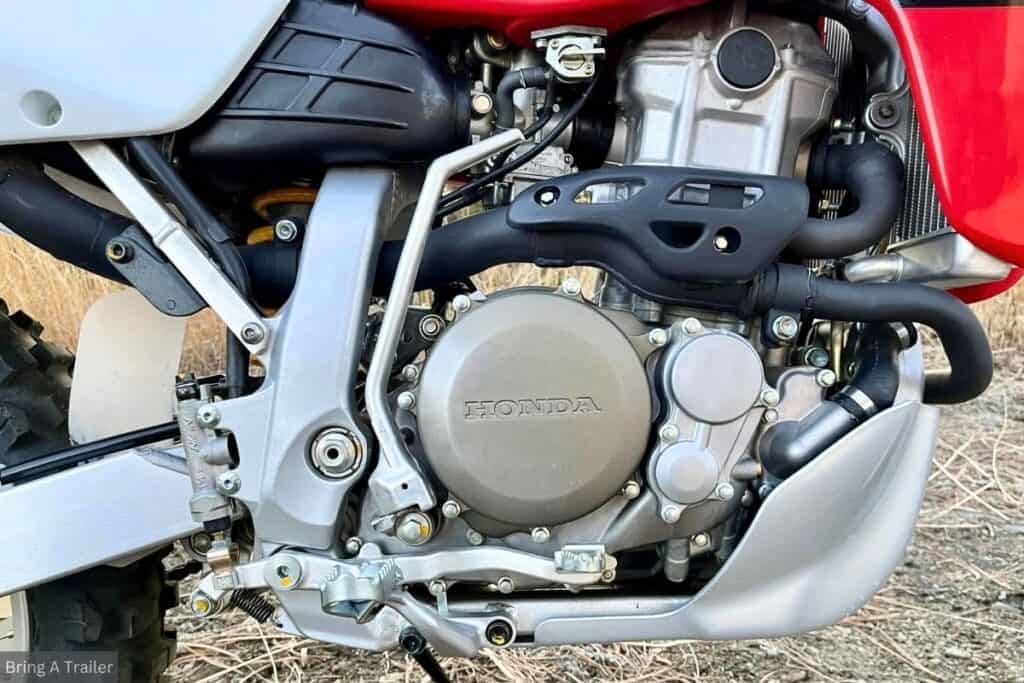
Now that you’ve seen the horsepower numbers for some of the most popular models, let’s discuss dirt bike horsepower so that you can have some context to the HP numbers you saw above.
Horsepower Basics
Horsepower (HP) is a unit of measurement that quantifies the power output of an engine.
In the context of dirt bikes, horsepower is an important factor that determines a machine’s ability to accelerate quickly, climb steep hills, and reach high speeds.
Dirt bike horsepower is typically measured at the crankshaft, which is the rotating shaft that converts the linear motion of the pistons into rotational motion.
This measurement is known as brake horsepower (bhp) and is often used by manufacturers to advertise their dirt bikes’ power output.
However, it’s important to note that the actual power delivered to the rear wheel of the bike, is usually slightly lower due to power loss through the transmission and drivetrain.
Factors that Affect Horsepower
Several factors impact a dirt bike’s horsepower, including engine size (displacement), engine type (2-stroke or 4-stroke), and tuning or modifications.
2-stroke engines are known for their high power-to-weight ratio, delivering a snappy and responsive power delivery, while 4-stroke engines offer a more linear and broad power curve.
Beyond Horsepower
It’s important to note that while horsepower is a key consideration when choosing a dirt bike, it’s not the only factor that affects performance.
As torque, which is the rotational force that the engine produces, also plays a significant role in a dirt bike’s ability to accelerate and tackle obstacles.
In addition, factors such as power-to-weight ratio, gearing, and suspension setup, can also contribute to a dirt bike’s overall performance.
Dirt Bike Horsepower by Class
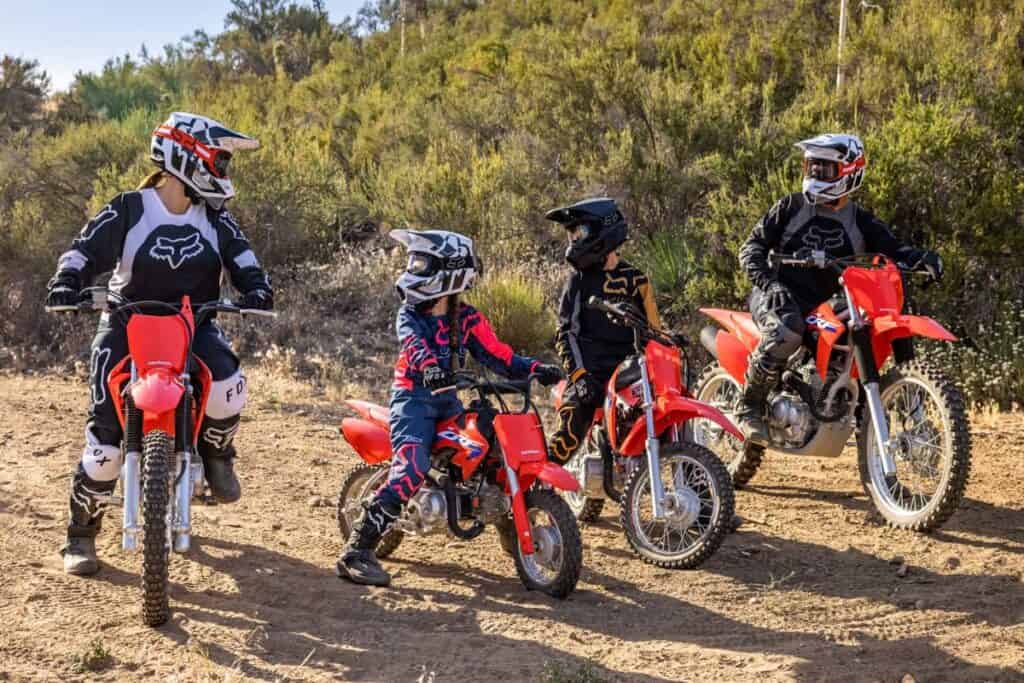
Dirt bikes come in various sizes and classes to accommodate riders of different ages, skill levels, and riding preferences.
So let’s take a closer look at the average horsepower for the main dirt bike classes, including mini, youth, and adult.
Mini Youth Dirt Bikes: (2-3 HP)
Mini youth dirt bikes, designed for young children, have the lowest horsepower among all classes.
These bikes usually feature small engines around 50cc, that produce between 2 and 3 horsepower.
Popular mini-youth models include the Honda CRF50F and the Yamaha PW50, both of which offer a safe and manageable introduction to dirt biking for young riders.
Youth Dirt Bikes: (6-15 HP)
As riders progress in age and skill, they can move up to youth dirt bikes, which offer more power and larger engines compared to mini dirt bikes.
Youth dirt bikes typically offer engine sizes ranging from 110cc to 125cc, producing between 6 and 15 horsepower.
These bikes are designed to accommodate growing riders and provide a stepping stone towards adult-sized machines.
Popular youth dirt bike models include the Kawasaki KLX110, the Suzuki DR-Z125L, and the KTM 85 SX, which each offer a balance of control and manageable power for younger riders.
Adult Dirt Bikes: (15-60 HP)
Adult dirt bikes offer the widest range of horsepower options, catering to riders of various skill levels and riding styles.
These bikes can be further categorized into different engine size classes with the two most popular being the 250 and 450.
- 250cc Class: Dirt bikes in the 250cc class, such as the Honda CRF250R, Yamaha YZ250F, and Husqvarna TC 250, typically produce between 35 and 50 horsepower. These bikes are popular among amateur racers and intermediate riders who prioritize agility and maneuverability.
- 450cc Class: The 450cc class is the most powerful among mainstream adult dirt bikes, with models like the Honda CRF450R, Kawasaki KX450, and the old-school Honda CR500 producing between 50 and 60 horsepower. These bikes are favored by professional racers and advanced riders who demand the highest level of performance.
Choose Dirt Bike Horsepower Based on Needs & Skill
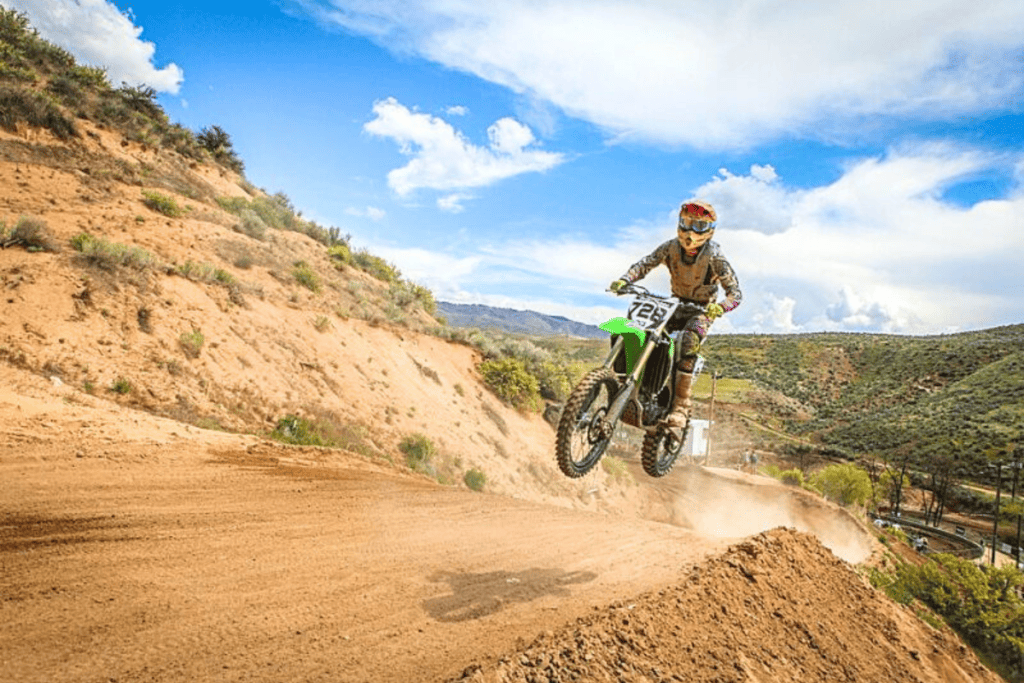
When selecting a dirt bike, it’s important to consider your individual needs, skill level, and intended use to ensure you choose a machine with the right horsepower.
While it may be tempting to opt for the most powerful dirt bike available, more horsepower isn’t always the best choice for every rider.
In fact, too much horsepower for your riding skill level is one of the quickest ways to get into trouble, or worse yet, hurt or injured.
So before choosing a dirt bike based on horsepower here are some factors to consider when deciding on the right dirt bike for you:
Rider Experience
Beginner riders or those with limited dirt biking experience should generally start with a lower-horsepower dirt bike, such as those found in the youth and low-end adult classes.
As these bikes offer a more manageable power delivery, allowing new riders to focus on developing proper technique and control, without getting overwhelmed.
Riding Style and Terrain
Your preferred riding style and the terrain you’ll be tackling should also influence your dirt bike horsepower choice.
If you primarily ride technical trails or tight, wooded areas, a lower-horsepower bike with a more manageable powerband may be better. These bikes often provide better low-end torque and a more linear power curve, making them easier to control in challenging conditions.
On the other hand, if you frequently ride in open desert terrain or participate in high-speed racing events, a higher-horsepower dirt bike may be a better choice.
Bikes in the 450cc class and above offer the power and top-end performance needed for these riding situations.
Physical Fitness and Stature
Your physical fitness level and stature should also be taken into account when choosing a dirt bike’s horsepower.
Higher-horsepower bikes are more physically demanding to ride, requiring greater strength and endurance to control.
If you’re smaller in stature or have limited physical fitness, a lower-horsepower bike may be more comfortable and easier to manage over longer riding sessions.
Cost and Maintenance Considerations
Higher-horsepower dirt bikes, in general, will always cost more.
In addition, they can often require more maintenance and be more expensive to work on.
So it’s important to consider your budget and willingness to perform regular maintenance when deciding on the appropriate horsepower for your dirt bike.
Still Unsure…
Ultimately, the right dirt bike horsepower for you will depend on a combination of your riding experience, preferred riding style, physical attributes, and practical considerations.
Because of this, it’s important to be honest with yourself about your abilities and needs to ensure you select a dirt bike that will provide a safe, enjoyable, and confidence-inspiring riding experience.
If you’re still unsure about which horsepower level is right for you, it’s never a bad idea to consult with experienced riders, trainers, or reputable dirt bike dealerships.
As these experts can provide personalized recommendations based on your specific needs, skills, and goals.
Pros & Cons of Different Dirt Bike Horsepower Ratings
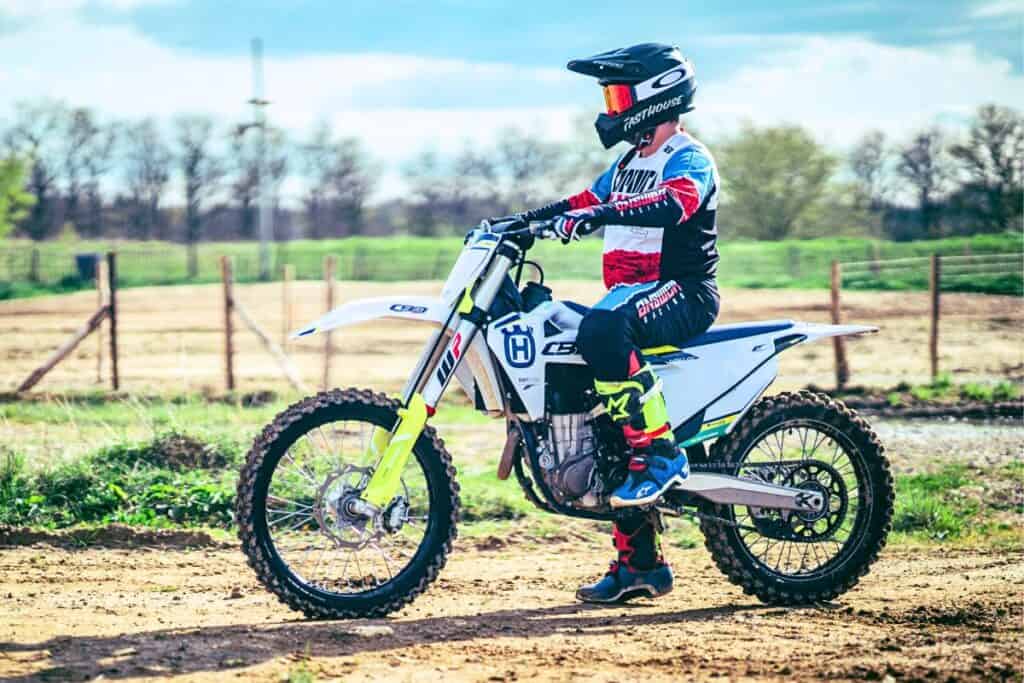
When choosing a dirt bike, it’s important to consider both the advantages and disadvantages of different horsepower ratings.
As contrary to popular belief, more horsepower is not always better.
Low Horsepower Dirt Bikes (Under 20 HP)
Pros:
- Easier to control and maneuver, especially for beginners.
- More forgiving power delivery, reducing the risk of accidents.
- Generally more affordable to purchase and maintain.
- Great for smaller riders or those with limited physical strength.
Cons:
- Limited top-end speed and acceleration.
- May struggle in challenging terrain or steep inclines.
- Riders may quickly outgrow the bike’s capabilities as their skills progress.
Medium Horsepower Dirt Bikes (20-40 HP)
Pros:
- Offers a nice balance between power and control.
- Suitable for a wide range of riding abilities and styles.
- Capable of handling most terrains and obstacles.
- Often more versatile than low or high-horsepower bikes.
Cons:
- May not provide enough power for advanced riders or competitive racing.
- Can still be challenging for beginners to control in certain situations.
- May not be as fuel-efficient as lower horsepower options.
High Horsepower Dirt Bikes (Over 40 HP)
Pros:
- Superior top-end speed and acceleration.
- Great for advanced riders and competitive racing.
- Can tackle the most challenging terrains and obstacles with ease.
- Provides an exhilarating riding experience.
Cons:
- Can be difficult to control, especially for less experienced riders.
- Higher risk of accidents due to increased power output and performance.
- More expensive to purchase, maintain, and operate.
- Requires greater physical strength and endurance to ride effectively.
How to Increase Your Dirt Bike’s Horsepower
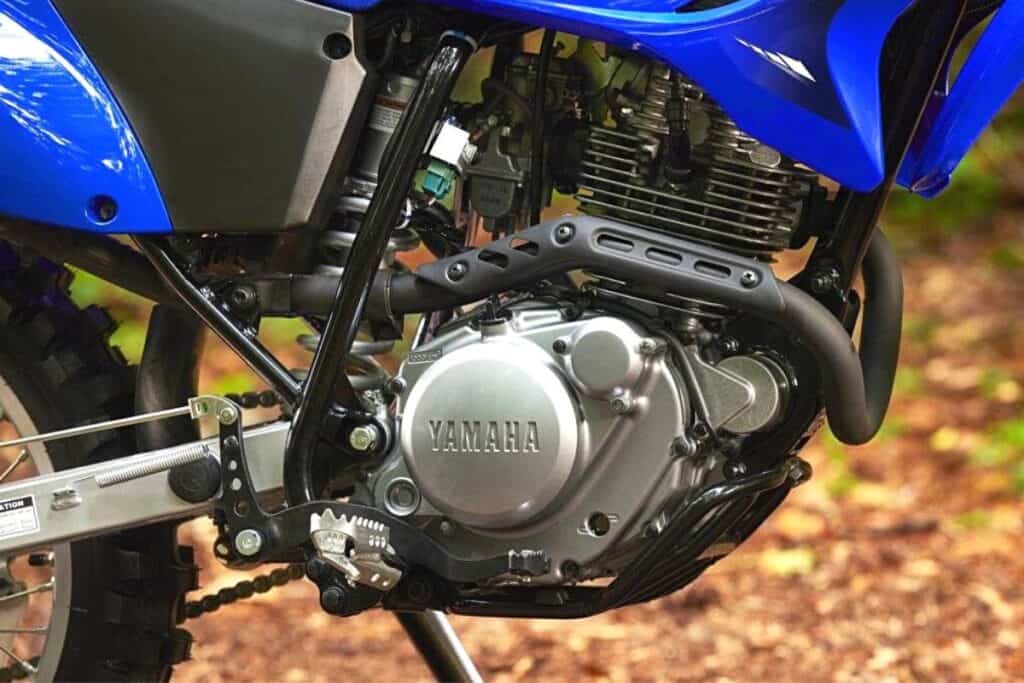
If you want to boost your dirt bike’s performance and maximize its power output, there are several ways to increase its horsepower.
These methods range from simple modifications to more advanced engine upgrades.
*Before making horsepower modifications, you should consider your riding ability, the bike’s overall setup, and the bike’s warranty, as making some of these mods could void the bike’s factory warranty.
With that said, however, let’s look at some of the best ways to boost your dirt bike’s horsepower and performance.
Best Ways to Increase Dirt Bike Horsepower
- Air Filter and Intake Upgrades: Replacing your stock air filter with a high-flow, aftermarket option can help increase horsepower by allowing more air into the engine. Paired with a modified airbox or intake system, this can result in better throttle response and overall power gains.
- Carburetors and Fuel Injection Tuning: Fine-tuning your dirt bike’s carburetor or fuel injection system can help optimize the air-fuel mixture for better performance. Adjusting the jetting, needle position, or fuel mapping can improve throttle response, power delivery, and overall horsepower gains.
- Exhaust System Upgrades: Upgrading to a high-performance exhaust system can help improve horsepower by allowing your engine to breathe more efficiently. An aftermarket exhaust can reduce back pressure and increase airflow, resulting in better throttle response and top-end power.
- High-Compression Pistons: Installing high-compression pistons can increase your dirt bike’s horsepower by allowing for a more efficient combustion process. However, higher compression ratios may also require higher-octane fuel and increase engine wear.
- Gearing Changes: Modifying your dirt bike’s gearing can also impact its performance and perceived horsepower. By changing the front or rear sprocket sizes, you can alter the bike’s acceleration and top-end speed. A larger rear sprocket or smaller front sprocket will result in quicker acceleration but lower top speeds, while a smaller rear sprocket or larger front sprocket will improve top-end speed but reduce low-end power.
- Engine Rebuilds and Big Bore Kits: For larger horsepower increases, you can do a complete engine rebuild or install a big bore kit. These advanced modifications involve replacing the cylinder, piston, and other key components to increase the engine’s displacement and compression ratio. Engine rebuilds and big bore kits can significantly boost horsepower but should only be performed by experienced mechanics or trusted professionals.
